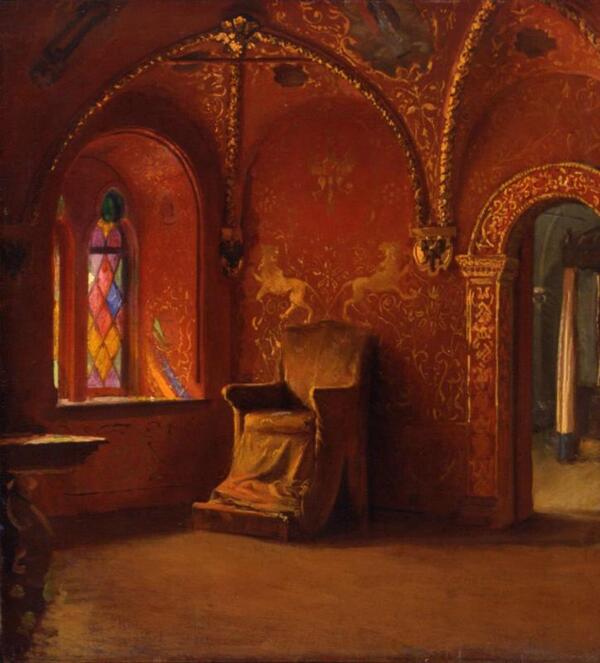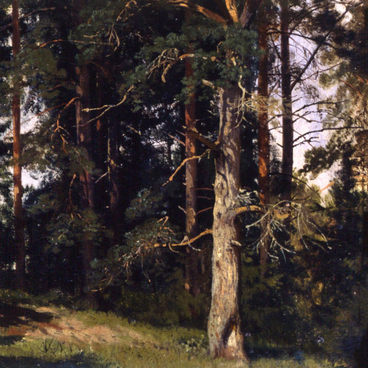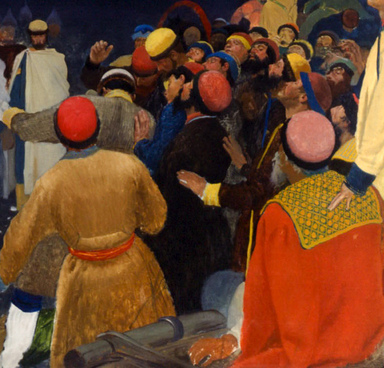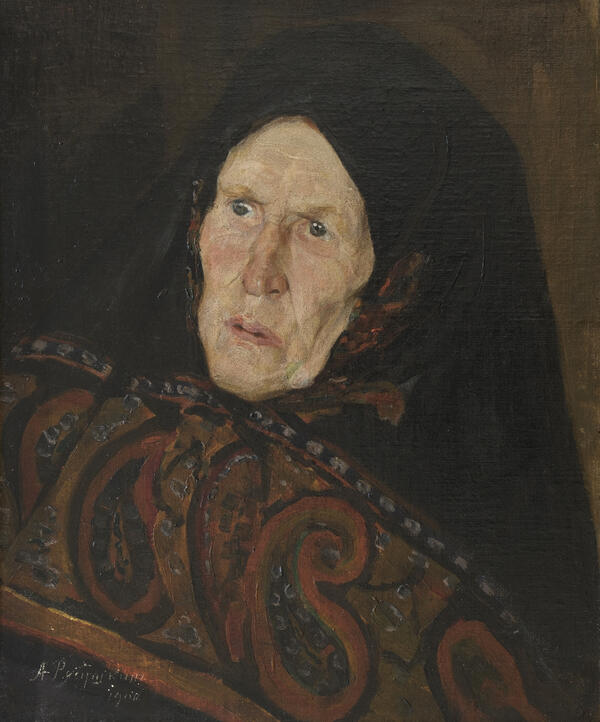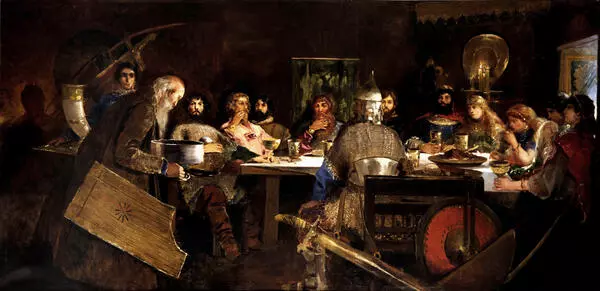“Red Chamber” is perhaps the only depiction of an interior in the oeuvre of Andrei Petrovich Ryabushkin. Most likely, this study-like painting was inspired by researching and exploring the architecture of the Moscow Kremlin in 1891–1892.
After graduating from the Imperial Academy of Arts, Andrei Ryabushkin went on a long journey through old Russian cities, including Veliky Novgorod, Moscow, Kiev, Tula, Yaroslavl, Ryazan, and Uglich. Being fascinated by history, in each of these cities, the artist studied ancient architecture, household objects, clothes, and weapons. He was also interested in literature on Russian history, chronicles, and folk tales. He earned fame and recognition as an artist by combining historical and genre painting to explore Russian history. He participated in the exhibitions of the Wanderers and Mir iskusstva (World of Art) and was awarded an honorable mention at the 1900 Paris Exhibition.
The artist painted “Red Chamber” during the last years of his life when he “finally found himself”. Created in 1899, the painting sends the viewer back three centuries — to the time when the Romanov dynasty came to power in Russia. The painting depicts one of the chambers of the Terem Palace, built in the 17thcentury in the Moscow Kremlin upon the order of the first Romanov tsar Michael I of Russia. It was there, in his study known as the Throne Chamber, that the tsar could spend some time alone.
Despite the small size of the Throne Chamber, its
interior décor was magnificent. It consisted of the purple walls and vaulted
ceilings, the glowing gold used generously in the painting and decoration of
various elements, such as door and window apertures, and in the ornate floral
patterns densely covering the room’s surfaces. The tsar’s velvet-covered chair
takes pride of place with roaring lions depicted above it as the symbols of
royal power. Soft, dim, iridescent light pours into the room through the paired
lancet stained-glass windows. The use of such bright and ornamental patterns in
Russian interior design reflected the people’s concept of perfection, paradise
beauty, and eternal bloom; the vaulted ceiling represented the sky, imitating “the
beauty of heavens”.

